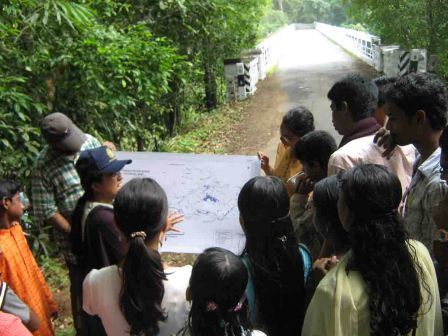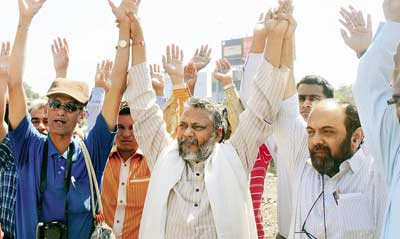Rivers
Narmada: Land at last - Video Volunteers
Posted on 22 Mar, 2011 11:55 AMArticle and Video Courtesy: Video Volunteers
Patterns of diversity and conservation status of freshwater fishes in the tributaries of river Ramganga in the Shiwaliks of the Western Himalaya – A paper in Current Science
Posted on 20 Mar, 2011 09:47 PMOne tributary was within a protected area (PA; Corbett National Park); the other two were outside the PA (Lansdowne Forest Division). Cast nets were used for fish sampling, which was done from 9.00 a.m. to 5.00 p.m.
Plan to make major rivers pollution-free under the NRCP - PIB release
Posted on 18 Mar, 2011 02:49 PMIt covers identified polluted stretches of 39 rivers in 182 towns spread over 20 States. The major rivers covered under the Plan include Ganga, Yamuna, Gomti, Damodar, Satluj, Krishna, Musi, Cauveri and Godavari besides others. Pollution abatement schemes are taken up under the Plan on a cost sharing basis between Centre and States.
Review of Krishna Water Disputes Tribunal - A report on Krishna river water allocations
Posted on 08 Mar, 2011 04:42 PMThis is a review of KWDT-2 report analysing how it has failed to protect the long term sustainable productivity and ecology of the river basin. It has also failed to understand the water allocations done by previous KWDT-1. KWDT-2 also negated the earlier KWDT-1 allocations at the same time categorically stating that it cannot change water use allocations of previous award.
Present status of interlinking of rivers project - Press Information Bureau release
Posted on 04 Mar, 2011 02:09 PMThe Government has said that the National Water Development Agency (NWDA) under the Ministry of Water Resources (MoWR) has identified 30 inter-state River links (16 under Peninsular Component & 14 under Himalayan Component) for preparation of Feasibility Reports (FRs). Out of these, FRs of 14 links under Peninsular Component and 2 links (Indian Portion) under Himalayan Component have been completed. Giving this information in written reply to a question in the Lok Sabha, present status of interlinking of rivers in the country, Shri Vincent H. Pala, Minister of State for Water Resources, said that the Five inter-state River links under Peninsular Component namely (i) Ken-Betwa, (ii) Parbati-Kalisindh-Chambal, (iii) Damanganga-Pinjal, (iv) Par-Tapi-Narmada & (v) Godavari (Polavaram)-Krishna (Vijayawada) were identified as priority links for building consensus among the concerned states for taking up their Detailed Project Reports (DPRs).
River schools can make the future look bright - Parineeta Dandekar
Posted on 04 Mar, 2011 01:25 PM Above - Children studying a map of the Chalakudy Basin. Photo - RRC.
Above - Children studying a map of the Chalakudy Basin. Photo - RRC.
Seeds of sustainability and sensitivity when sown at a young age, blossom into responsible individuals. And you need to be in touch with the land to sow those seeds. The Central and State Boards of Education in India have made Environmental Science a compulsory subject for schools and junior colleges (for all subjects). But Environmental Sciences is not to be studied in the classroom. In order to understand the erosion and deposition processes of a river, students need to visit a river bend in their city and in order to instil a lifelong aversion to plastic bags, a landfill and dumping grounds need to be seen.
Temple fish sanctuaries: Last bastions of native fish and pristine river stretches - A report
Posted on 01 Mar, 2011 12:56 PM
Temple Fish Sanctuaries: Last bastions of native fish and pristine river stretches
Ujaan: Festival for the Sunderbans, 10th to 12th March 2011, Frasergunj-Bakkhali, Sunderban district, West Bengal
Posted on 24 Feb, 2011 11:31 AMOrganizer: Ujaan
Venue: Frasergunj-Bakkhali, Sunderban district, West Bengal





